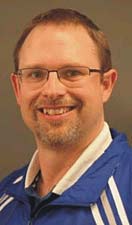|
TennisOne Lessons It's About Time: Learning Tennis as an Open Skill Wayne Elderton We are starting a new series about learning tennis as an open skill. To find out what that means, read on. You may have noticed that the strokes players learn in lessons sometimes are nowhere to be found once a match starts. When playing tennis, is it only about how you stroke the ball, or is it about when you do what you do? Every player knows that if they don’t do the right thing at the right time, losing will most likely be the result. In other words, when to do the movements in tennis are just as important as how. To play successfully, we need to select when to perform skills. A well executed stroke done at the wrong time loses just as many points as a poorly executed stroke. If that is true, learning a tennis stroke should be just as much about when to use it and when not to? I will propose the radical notion that all stroke training should include the right time to perform the technique as well as when not to (and alternatives).
The Myth of the ‘Model’ Stroke For various reasons, tennis coaching evolved over the years into coaching tennis like a closed skill by making everything about performing specific technical movements in a prescribed form. For example, when looking at the forehand groundstroke, a standard model will appear in the minds of most coaches and players. In recent years the content of the model has been changed to reflect the modern trends of the game (e.g. Semi-open stance, loop swing, Semi-western grip, etc). Traditional tennis coaching was based on the priority of conforming students to these models. This is the closed skill mind-set. The typical lesson consisted of a coach delivering a soft feed to a student and harping about the elements of the “perfect form.” Once the model stroke was reasonably stable, the coach sent the player back into the "real world," expecting the player to successfully use the carefully-polished stroke in a live rally or match-play situation. The typical result was that the stroke quickly broke down. Why? Because the player was not taught how to adapt it to real play situations. In other words, the player didn’t learn tennis as an Open Skill. After the breakdown, the player would return to the coach only to have the cycle repeated. Learning tennis through a closed skill approach impedes development of open skills because it falsely conveys the concept that there is a "one size fits all" technique that is good for every situation (e.g. "The basic forehand"). However, does the same technique occur if the forehand is performed off a wide ball or a 3/4 court low ball? Is it the same for an attacking shot, or a defensive one? Is it the same when receiving a high ball or sending a sharp angle reply? Even with all kinds of great video like that found on on TennisOne, the closed skill mind-set still continues. How many people try to learn the Federer’s forehand (he is often used as an example because he is more "classical")? Look at the four video clips of Federer below. They are all forehands, yet they are all different. In each clip, look at which foot he launches off and then lands on. Look at the shape of the swing. Notice the different levels at which he contacts the ball, and the shape of the follow-throughs. So, which one of these forehands are you supposed to emulate to mimic the "Federer forehand?"
No wonder people get frustrated when they practice their forehands (or pay money to learn the stroke) and have it disappear during a match. So, when the "basic stroke" must be changed constantly to adapt to each unique situation, it becomes the exception rather than the rule. Don’t get me wrong, I am not saying the traditional way of learning tennis doesn’t work at all (it has worked and produced the best players for decades), rather I am just pointing out that, in the evolution of things, if we find better ways, they are worth exploring. So how do you learn tennis as an Open Skill and what are the tools need? That is what this series is about. Your comments are welcome. Let us know what you think about Wayne Elderton's article by emailing us here at TennisOne.
|
||||||||
 Wayne Elderton
Wayne Elderton